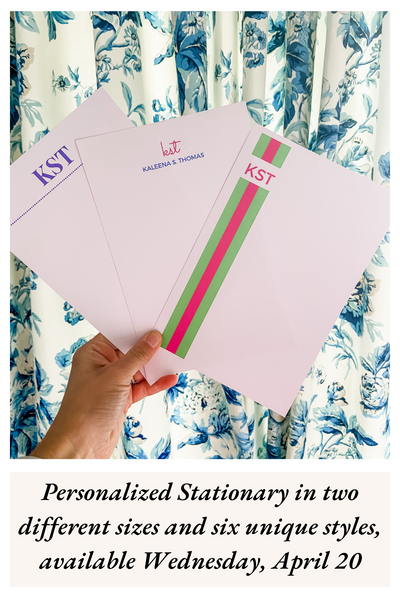From Sketches to the Store: Where Your Favorite J. Margaret Weaver Pieces Come From
Did you know it can take a year or more to go from a croquis or a "quick sketch" of a design to delivering the final production order? While I remember learning about fast fashion giants in business school that consolidate this timeline down into about six weeks (an interesting, though different, business model); small batch, independent designers like J. Margaret Weaver take a different approach.
Right now, I'm toggling between real life where it's Summer 2022 and work life where I'm preparing as far ahead as Fall 2023. Planning so far ahead can be disorienting; while I have to envision timelines and events and demand for Spring and Fall 2023, I'm also reminded that it's still June 2022 when I want to sign a check with the wrong year.
Coming from the healthcare industry, I had no idea how detailed and labor-intensive it was to bring a design to life. That said, the process is always fresh and fun because it brings together creativity, functionality and inspiration with your feedback. For those of you who have completed a design survey or tried on a sample, your commentary has been invaluable toward bringing an initial idea to fruition.
If you're like me and curious how an idea ultimately becomes a piece of clothing in a store, read on or listen on Spotify, Apple, and Anchor. for the 411.

Gather Inspiration: For me, inspiration comes from observing others and asking questions like: What are other women wearing and why? What types of fabric or prints translate best with what they are wearing? What practical needs does our customer have, and how can we meet those in a unique yet pragmatic way? We also send out design surveys with questions about preferred fabrics, fit, and design so that we are making something that you want.
Sketch the Design: Officially called a croquis, the sketch includes a rough draft of the front and back of the design, along with a written description to add clarity for the patternmaker.
Introductory Meeting with Patternmaker: We discuss the sketches, fabric, trim, and purpose of the design. For example, we may talk about how a dress should hang on different body types, how a top will likely be worn under something which informs the fit and fabric, or how we can make pants with as flexible an inseam as possible to allow for minimal alterations.
Tweak 3D Design: Before creating a physical sample, the patternmaker creates a 3D mockup on an avatar. This allows us to tweak the lines of the design without wasting resources on a physical sample - a huge cost and time savings.
Physical Samples: Once the 3D design is finished, we test multiple rounds of samples on a fit model and show them to other women for feedback. Fun fact: the samples are always in white or ivory fabric so fit or design issues are apparent and fixed prior to production.
Create Final Samples: Once the initial sampling process is complete, it's time to give the final "sew by" sample (similar to a "go by" in the business or engineering world) to our atelier to create samples in the production fabric. We evaluate these samples for fit and design as well.
Open Pre-Sale and Wholesale Orders: The most impactful step in bringing you high-quality, ethically-made in the USA clothing at an attainable price is our pre-sale and wholesale ordering step. We open pre-sales for one week to allow our customers to order the exact the colors and sizes they want prior to production. Our wholesale customers (e.g., boutiques) do the same. This allows us to more precisely pinpoint demand and reduce wasted costs from ordering too much of a particular color or making too much in the wrong sizes. The best part is that this translates to better fiscal stewardship for us, and we can pass this benefit along in our pricing.
Start Production: Finally there! Once orders are in, we procure fabric and trim, and coordinate with our atelier in Kansas City to bring everything to life! We also finalize the name of each piece, interview the honoree, coordinate a photoshoot, and start working on sketches and patterns for the next two seasons. Whew!
Ship Orders and Post Webstock: The best step, by far! We pick up the orders downtown from the atelier, pack them, and ship everything out to our amazing customers and stores. This is by far the most surreal step for me as I imagine and anticipate the many memories and events you will experience in your pieces.
Continue reading






















